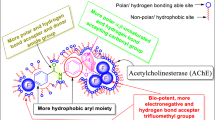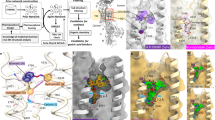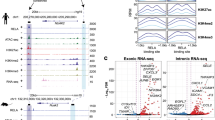Summary
Benzamides have been in clinical use for many years in treatment against various disorders. A recent application is that as a sensitizer for radio- or chemotherapies. We have here analysed the mechanism of action of N-substituted benzamides using an in vitro system. We found that while procainamide was biologically inert in our system, the addition of a chloride in the 3′ position of the benzamide ring created a compound (declopramide) that induced rapid apoptosis. Furthermore, declopramide also inhibited NFκB activation by inhibition of IκBβ breakdown. An acetylated variant of declopramide, N-acetyl declopramide, showed no effect with regard to rapid apoptosis induction but was a potent inhibitor of NFκB activation. In fact, the addition of an acetyl group to procainamide in the 4′ position was sufficient to convert this biologically inactive substance to a potent inhibitor of NFκB activation. These findings suggest two potential mechanisms, induction of early apoptosis and inhibition of NFκB mediated salvage from apoptosis, for the biological effect of N-substituted benzamides as radio- and chemo-sensitizers. In addition it suggests that N-substituted benzamides are potential candidates for the development of anti-inflammatory compounds using NFκB as a drug target.
Similar content being viewed by others
Article PDF
Change history
16 November 2011
This paper was modified 12 months after initial publication to switch to Creative Commons licence terms, as noted at publication
References
Baeuerle, PA & Baltimore, D (1996). NF-kappa B: ten years after. Cell 87: 13–20.
Baldwin, AS Jr (1996). The NF-kappa B and I kappa B proteins: new discoveries and insights. Annu Rev Immunol 14: 649–683.
Beg, AA & Baltimore, D (1996). An essential role for NF-kappaB in preventing TNF-alpha-induced cell death. Science 274: 782–784.
Chen, ZJ, Parent, L & Maniatis, T (1996). Site-specific phosphorylation of IκBα by a novel ubiquitination-dependent protein kinase activity. Cell 84: 853–862.
Cohen, GM (1997). Caspases: the executioners of apoptosis. Biochem J 326: 1–16.
de Martin, R, Vanhove, B, Cheng, Q, Hofer, E, Csizmadia, V, Winkler, H & Bach, FH (1993). Cytokine-inducible expression in endothelial cells of an I kappa B alpha-like gene is regulated by NFκB. Embo J 12: 2773–2779.
DiDonato, J, Mercurio, F, Rosette, C, Wu-Li, J, Suyang, H, Ghosh, S & Karin, M (1996). Mapping of the inducible IκB phosphorylation sites that signal its ubiquitination and degradation. Mol Cell Biol 16: 1295–1304.
Dolle, RE, Hoyer, D, Prasad, CV, Schmidt, SJ, Helaszek, CT, Miller, RE & Ator, MA (1994). P1 aspartate-based peptide alpha-((2,6-dichlorobenzoyl)oxy)methyl ketones as potent time-dependent inhibitors of interleukin-1 beta-converting enzyme. J Med Chem 37: 563–564.
Enari, M, Sakahira, H, Yokoyama, H, Okawa, K, Iwamatsu, A & Nagata, S (1998). A caspase-activated DNase that degrades DNA during apoptosis, and its inhibitor ICAD. Nature 391: 43–50.
Ghosh, S, May, MJ & Kopp, EB (1998). NFκB and rel proteins: evolutionarily conserved mediators of immune responses. Annu Rev Immunol 16: 225–260.
Harrington, RA, Hamilton, CW, Brogden, RN, Linkewich, JA, Romankiewicz, JA & Heel, RC (1983). Metoclopramide. An updated review of its pharmacological properties and clinical use. Drugs 25: 451–494.
Hua, J & Pero, RW (1997). Toxicity, antitumor and chemosensitizing effects of 3-chloroprocainamide. Acta Oncol 36: 811–816.
Hua, J, Olsson, A, Sheng, Y & Pero, RW (1995). Acidic and neutralized metoclopramide formulations sensitize ionizing radiation induced cytotoxicity in a human lung adenocarcinoma xenografted to scid mice. Anticancer Drugs 6: 451–455.
Hua, J, Olsson, AR & Pero, RW (1997). Neutral metoclopramide sensitizes cytotoxicity induced by ionizing radiation in SCID mice xenografted with a human brain astrocytoma. Int J Cancer 73: 871–874.
Kjellen, E, Wennerberg, J & Pero, R (1989). Metoclopramide enhances the effect of cisplatin on xenografted squamous cell carcinoma of the head and neck. Br J Cancer 59: 247–250.
Kjellen, E, Pero, RW, Brun, E, Ewers, SB, Jarlman, O, Knoos, T, Malmstrom, P, Tennvall, J, Killander, D & Olsson, A et al (1995). A phase I/II evaluation of metoclopramide as a radiosensitiser in patients with inoperable squamous cell carcinoma of the lung. Eur J Cancer 31A: 2196–2202.
Koopman, G, Reutelingsperger, CP, Kuijten, GA, Keehnen, RM, Pals, ST & van Oers, MH (1994). Annexin V for flow cytometric detection of phosphatidylserine expression on B cells undergoing apoptosis. Blood 84: 1415–1420.
Le Bail, O, Schmidt-Ullrich, R & Israel, A (1993). Promoter analysis of the gene encoding the IκB-α/MAD3 inhibitor of NFκB: positive regulation by members of the rel/NFκB family. Embo J 12: 5043–5049.
Lee, FS, Hagler, J, Chen, ZJ & Maniatis, T (1997). Activation of the IκB alpha kinase complex by MEKK1, a kinase of the JNK pathway. Cell 88: 213–222.
Liberg, D, Sigvardsson, M, Bemark, M & Leanderson, T (1998). Differentiation-specific, octamer-dependent costimulation of kappa transcription. J Immunol 160: 3899–3907.
Liu, ZG, Hsu, H, Goeddel, DV & Karin, M (1996). Dissection of TNF receptor 1 effector functions: JNK activation is not linked to apoptosis while NFκB activation prevents cell death. Cell 87: 565–576.
Lybak, S & Pero, RW (1991). The benzamide derivative metoclopramide causes DNA damage and inhibition of DNA repair in human peripheral mononuclear leukocytes at clinically relevant doses. Carcinogenesis 12: 1613–1617.
Lybak, S, Kjellen, E, Wennerberg, J & Pero, R (1990). Metoclopramide enhances the effect of ionizing radiation on xenografted squamous cell carcinoma of the head and neck. Int J Radiat Oncol Biol Phys 19: 1419–1424.
Olsson, AR, Hua, J, Sheng, Y & Pero, RW (1997). Neutral metoclopramide induces tumor cytotoxicity and sensitizes ionizing radiation of a human lung adenocarcinoma and virus induced sarcoma in mice. Acta Oncol 36: 323–330.
Paige, CJ, Kincade, PW & Ralph, P (1978). Murine B cell leukemia line with inducible surface immunoglobulin expression. J Immunol 121: 641–647.
Pero, RW, Olsson, A, Amiri, A & Chaplin, D (1998). Multiple mechanisms of action of the benzamides and nicotinamides as sensitizers of radiotherapy: opportunities for drug design. Cancer Detect Prev 22: 225–236.
Pero, RW, Axelsson, B, Siemann, D, Chaplin, D & Dougherty, G (1999). Newly discovered antiinflammatory properties of benzamides and nicotinamides. Mol Cell Biochem 193: 119–125.
Perry, RP & Kelley, DE (1979). Immunoglobulin messenger RNAs in murine cell lines that have characteristics of immature B lymphocytes. Cell 18: 1333–1339.
Philpott, NJ, Turner, AJ, Scopes, J, Westby, M, Marsh, JC, Gordon-Smith, EC, Dalgleish, AG & Gibson, FM (1996). The use of 7-amino actinomycin D in identifying apoptosis: simplicity of use and broad spectrum of application compared with other techniques. Blood 87: 2244–2251.
Rang, HP & Urban, L (1995). New molecules in analgesia. Br J Anaesth 75: 145–156.
Robert-Piessard, S, Lebout, G & Courant, J (1990). Activity of N-(4-6-dimethyl-2-pyridinyl)benzamides and derivatives. Eur J Med Chem 25: 9–19.
Rosoff, PM, Stein, LF & Cantley, LC (1984). Phorbol esters induce differentiation in a pre-B-lymphocyte cell line by enhancing Na+/H+ exchange. J Biol Chem 259: 7056–7060.
Rosoff, PM & Cantley, LC (1985). Lipopolysaccharide and phorbol esters induce differentiation but have opposite effects on phosphatidylinositol turnover and Ca2+ mobilization in 70Z/3 pre-B lymphocytes. J Biol Chem 260: 9209–9215.
Sakahira, H, Enari, M & Nagata, S (1998). Cleavage of CAD inhibitor in CAD activation and DNA degradation during apoptosis. Nature 391: 96–99.
Schmid, I, Uittenbogaart, CH, Keld, B & Giorgi, JV (1994). A rapid method for measuring apoptosis and dual-color immunofluorescence by single laser flow cytometry. J Immunol Methods 170: 145–157.
Screiber, E, Matthias, P, Muller, MM & Schaffner, W (1989). Rapid detection of octamer binding proteins with ‘mini extracts’, prepared from a small number of cells. Nucleic Acids Res 17: 6419.
Sen, R & Baltimore, D (1986). Inducibility of kappa immunoglobulin enhancer-binding protein Nf-kappa B by a posttranslational mechanism. Cell 47: 921–928.
Stanley, M & Rotrosen, J (1982). The Benzamides: Pharmacology, Neurobiology and Clinical Aspects. Raven Press: New York.
Thompson, JE, Phillips, RJ, Erdjument-Bromage, H, Tempst, P & Ghosh, S (1995). I kappa B-beta regulates the persistent response in a biphasic activation of NFκB. Cell 80: 573–582.
Thornberry, NA, Bull, HG, Calaycay, JR, Chapman, KT, Howard, AD, Kostura, MJ, Miller, DK, Molineaux, SM, Weidner, JR & Aunins, J et al (1992). A novel heterodimeric cysteine protease is required for interleukin-1 beta processing in monocytes. Nature 356: 768–774.
Van Antwerp, DJ, Martin, SJ, Kafri, T, Green, DR & Verma, IM (1996). Suppression of TNF-alpha-induced apoptosis by NF-kappa B. Science 274: 787–789.
Wang, CY, Mayo, MW & Baldwin, AS Jr (1996). TNF- and cancer therapy-induced apoptosis: potentiation by inhibition of NFκB. Science 274: 784–787.
Werning, JW, Stepnick, DW, Jafri, A, Megerian, CA, Antunez, AR & Zaidi, SI (1995). Metoclopramide enhances the effect of photodynamic therapy on xenografted human squamous cell carcinoma of the head and neck. Arch Otolaryngol Head Neck Surg 121: 783–789.
Whiteside, ST & Israel, A (1997). IκB proteins: structure, function and regulation. Semin Cancer Biol 8: 75–82.
Whiteside, ST, Epinat, JC, Rice, NR & Israel, A (1997). I kappa B epsilon, a novel member of the I kappa B family, controls RelA and cRel NFκB activity. Embo J 16: 1413–1426.
Wu, M, Lee, H, Bellas, RE, Schauer, SL, Arsura, M, Katz, D, FitzGerald, MJ, Rothstein, TL, Sherr, DH & Sonenshein, GE (1996). Inhibition of NFκB/Rel induces apoptosis of murine B cells. Embo J 15: 4682–4690.
Author information
Authors and Affiliations
Rights and permissions
From twelve months after its original publication, this work is licensed under the Creative Commons Attribution-NonCommercial-Share Alike 3.0 Unported License. To view a copy of this license, visit http://creativecommons.org/licenses/by-nc-sa/3.0/
About this article
Cite this article
Liberg, D., Lazarevic, B., Pero, R. et al. N-substituted benzamides inhibit NFκB activation and induce apoptosis by separate mechanisms. Br J Cancer 81, 981–988 (1999). https://doi.org/10.1038/sj.bjc.6690796
Received:
Revised:
Accepted:
Published:
Issue date:
DOI: https://doi.org/10.1038/sj.bjc.6690796
Keywords
This article is cited by
-
Mechanism of action for N-substituted benzamide-induced apoptosis
British Journal of Cancer (2002)



